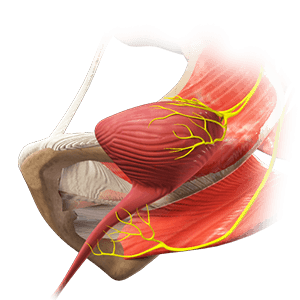
What is Overactive Bladder?
The act of urination is controlled by nerve impulses triggered by a full urinary bladder (temporary storage unit of urine). The nerves signal the muscles (urinary sphincter muscles) around the bladder to relax and contract, pushing urine to the outside. Overactive bladder is a condition where you find it difficult to hold back urine, and you have a sudden urge to urinate, urinate frequently, urinate two or more times in the night (nocturia) and experience leakage of urine (incontinence). Overactive bladder can lead to a lot of emotional distress and embarrassment, especially when it occurs during social interactions and work schedules.
What Causes Overactive Bladder?
Overactive bladder refers to the bladder trying to empty when you do not intend to urinate. This can be experienced as strong urges to urinate or leakage of urine. When you have these feelings, the bladder is squeezing to expel urine. There are many causes for overactive bladder. Some common conditions include chronic irritation within the bladder, strokes, spinal cord issues, diabetes, and pelvic floor dysfunction. Your physician will work with you to identify possible causes.
Diagnosis
When you visit your doctor with complaints of uncontrolled urges to urinate and incontinence, special tests are performed to measure if your bladder empties completely, assess the pressure around it, and the speed and volume of your voiding.
Treatment
The treatment of overactive bladder is structured into four levels of therapies.
First Line:
First line therapies consist of bladder training and changes to your diet. Specific food and drinks that can cause overactive bladder include coffee, tea, chocolate, spicy food, citrus fruit, acidic foods, and many others. A sequential elimination diet, in which a single type of food is avoided at a time, can help to identify if any specific food is making your symptoms worse.
Bladder training is the process of rebuilding the control over your bladder that you learned as a young child. This most commonly takes the form of timed voiding. In the timed voiding strategy, the time you wait to urinate is steadily increased as you train your bladder to greater control.
Kegel exercises (pelvic floor training) is often advised for management of
Second Line
Second line therapies are medications. Two major types of medication are available for overactive bladder, anticholinergic and beta-3 agonists. Both work directly on cells within the bladder to reduce the contractions. Anticholinergics are older and better covered by insurance, but are known to have common side effects such as constipation, dry mouth, and dry eyes. Beta-3 agonists are newer and may slightly increase blood pressure, but are usually well tolerated. In some instances these medications are used in combination, and can also be used with other common medications that target the prostate in men with overactive bladder. Vaginal estrogen cream can be used in post-menopausal women with overactive bladder with good effect.
Third Line
Third line therapies include percutaneous tibial nerve stimulation (PTNS), sacral neuromodulation (SNS), and botox injection of the bladder. PTNS is performed in the office and required daily stimulation for several weeks to show benefit. Sacral neuromodulation involves implantation of a small electrical generator in the upper buttock to regulate the nerve impulse to the bladder. Botox can also be directly injected into the muscle of the bladder to cause relaxation of the bladder. All these procedures are considered low risk for the average patient. Your doctor can counsel you about the options available to you.
Fourth Line
Major surgical interventions, such as augmentation of the bladder with intestinal tissue or removal of the bladder are considered fourth line interventions. Very few patients every require these types of procedures.
